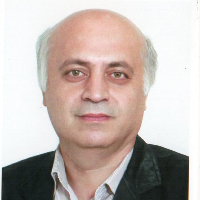Modeling and investigation of the performance of MLP and RBF during the paddy rice drying in microwave dryer
Rice is one of the most important cereals and is the second-highest worldwide production after wheat and also is a good source of nutrients for humans. It plays an important role in the feeding of the many parts of the world including Iran. The harvested paddy rice has the high initial moisture content of nearly 25-28% (wet basis) that caused corruption. Therefore, in order to prevent corruption and safe storage, it must be dried to 10-13% moisture content. Drying is one of the oldest methods of preserving food and agricultural products that used to increase the food’s storage time. There are several methods for drying paddy rice that none of them are ideal and have several advantages and disadvantages that one of them that recently the use of it has been increased is microwave drying. Microwave drying uses electromagnetic radiations with the frequency range of 300 MHz to 300 GHz and the wavelengths of 1-0.01m. In microwave drying due to better energy concentration, moisture is removed more quickly so the drying time decreases. Due to the complex relationship between input and output variables in the drying process, the selection of the model that can estimate the drying behavior of the products is difficult. Hence, the use of intelligent modeling methods such as neural networks is the best choice.
In this research, in order to investigate the effect of microwave power on kinetics of rice drying, head rice yield and effective diffusivity coefficient of moisture, a continuous type of domestic microwave dryer ( DEM-281 QOT-PW) were used. This dryer has a microwave radiation chamber where the samples are put on it on the tray that was placed on a digital balance. The experiments were performed at three microwave power levels designated as 270, 360 and 450 W. Also, Shirudi paddy rice was used as the raw material and the drying rice process from the initial moisture content of 21% to the final moisture content of 11% is examined. In this study, the neural network toolbox of MATLAB 2017R was used to model the kinetics of rice drying in the microwave dryers. RBF and MLP have 3 layers including input, hidden and output layers. The input layer has two neurons that show the number of input variables that were time and microwave power and the output layer has one neuron that shows the number of output variables that was MR in this study. 70% and 30% of the data was used for training and testing the network, respectively. To estimate the ANN performance, mean square error (MSE) and the coefficient of determination (R2) was used.
The maximum and minimum drying time was 42 and 20 minutes in 270 and 450 watts, respectively. Also, the maximum and minimum effective diffusivity coefficient of moisture were 4.17 * 10^-9 and 1.82* 10^-9 in 450 and 270 watts, respectively. RBF network with Guassian transfer function and high neurons number and MLP network with Levenberg-Marquardt ( LM) learning algorithm and tan-sigmoid (tansig) transfer function with low neurons number were able to model the kinetics of drying as well as. In general, the drying time and head rice yield decreased but the effective diffusivity coefficient of moisture increased by increasing the microwave power. Also drying at different microwave power did not affect rice color and quality. The results of the modeling of rice drying by using two different neural networks including MLP and RBF demonstrated that the MLP network with Levenberg-Mrrqurdt (LM) learning algorithm and tan-sigmoid (tansig) transfer function has the better performance than the RBF network with Gussian transfer function and the error and the correlation coefficient in MLP are less and higher than the RBF, respectively.
-
Evaluation of far-infrared drying on the quality properties of zucchini slices: influence of operating parameters
Fatemeh Jafari, *, Ebrahim Sadeghi
Journal of Innovative Food Technologies, -
Drying of Shitake Mushrooms Using a Combination of Convective-Infrared Dryer
M. Delangiz, M. Shahiri Tabarestani, K. Movagharnejad *
Iranian Chemical Engineering Journal,



